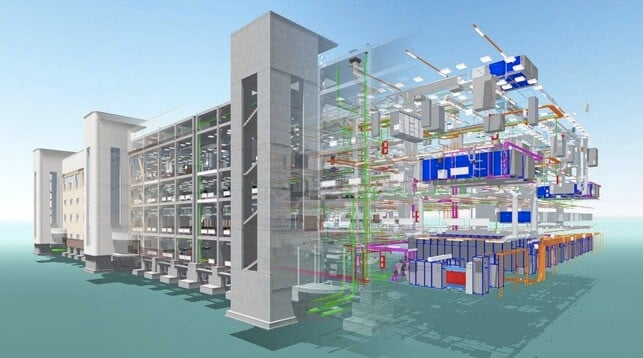BIM Implementa in the Civil Engineering - Overview, Benefits & Factors Affecting

Table of Contents
The Rise of BIM in the Civil Engineering Industry
Building Information Modelling (BIM) is transforming the civil engineering industry by enabling seamless collaboration, cost estimation, budget control and risk management, improving design accuracy, reducing conflicts, and allowing for sustainability analysis. BIM is valuable beyond construction, helping with facility management, maintenance, and renovations. Governments worldwide mandate or encourage the use of BIM in public projects, and its adoption depends on various factors. Implementing BIM requires assessment, planning, training, standards development, collaboration enhancement, data management, performance measurement, scaling, adaptation, and a culture of innovation. BIM continues to evolve, incorporating Artificial Intelligence (AI), machine learning (ML), and the Internet of Things (IoT), making it an essential tool for civil engineering in the modern era.
Overview of BIM Adoption in the Construction Industry
The civil engineering industry is rapidly evolving due to the adoption of BIM in the construction industry. The digital representation of construction projects is a seamless blend of 3D models with data on materials, costs, schedules, and other relevant information. By utilising BIM, projects can be visualised and managed comprehensively, resulting in easier and more efficient planning and better design, construction, and management of infrastructure projects.
Benefits of BIM in the Construction Industry

BIM adoption in the construction industry is based on its proven benefits, government mandates, and industry standards. Adopting BIM in the construction industry requires careful planning, training, and a cultural shift towards embracing digital collaboration and innovation. BIM technology's contribution to project efficiency, sustainability, and cost-effectiveness will become even more prominent as it advances.
- BIM encourages collaboration between project stakeholders, enhances communication, and reduces errors.
- Engineers can create detailed 3D models while optimising designs for efficiency and cost-effectiveness.
- By using BIM, issues can be identified and mitigated early, resulting in reduced costly rework during construction.
- BIM supports the analysis of sustainability factors, leading to eco-friendly design choices.
- BIM aids project scheduling, resource allocation, and progress tracking.
- BIM's digital record aids in maintaining, renovating, and managing facilities.
- BIM assists in ensuring that building codes and regulations are adhered to.
Also Check : BIM in Civil Engineering
Methodology for BIM Implementation in Construction Industry for Civil Engineers
To maximise the benefits of BIM, it is important to implement its introduction in civil engineering systematically and strategically. BIM implementation is a continuous process that needs to be aligned with the specific needs and goals of civil engineering projects. Being flexible, adaptable, and committed to learning and improvement is necessary to adopt BIM in the construction industry. Below is a general framework for creating an approach to implementing BIM in civil engineering:
- Assess your organisation's readiness for BIM, which includes technology, skills, and willingness to adapt.
- Make sure to clearly define your BIM adoption goals and align them with the organisational objectives.
- Create a detailed plan that outlines the steps, timelines, and allocated resources.
- Select BIM software that meets your project needs, compatibility, and scalability.
- Provide staff training and skill development in BIM tools and workflows.
- Create BIM processes and protocols that are standardised.
- Begin with small pilot projects to test BIM processes and receive feedback.
- Encourage collaboration among stakeholders and implement communication tools.
- Create a centralised data management system and investigate integrations.
Keep track of progress and gather feedback to make improvements. - Expand BIM adoption to larger projects, increasing confidence and experience.
- Keep up-to-date with industry trends and regulations and adjust your BIM strategy as necessary.
- Promote a culture of BIM innovation and continual improvement within your organisation.
Factors Affecting BIM Implementation in Construction Around the World - Must Know For Civil Engineers
The process of civil engineers for adopting BIM in the construction industry is complicated and influenced by various factors. There can be significant differences between regions or organisations when it comes to these factors. To adopt BIM successfully, a strategic approach must take into account these factors. The specific needs and goals of the civil engineering project or organisation should align with BIM implementation. BIM adoption in the construction industry for civil engineers worldwide is influenced by location, regulations, cost, technology, and education, among other factors.
- Government Policies: BIM adoption in the construction industry is greatly influenced by government regulations and mandates. Many countries require BIM usage in public infrastructure projects through policies. These mandates motivate civil engineers to adopt BIM practices.
- Construction Industry Guidelines: Industry-specific BIM standards and guidelines can be made available to facilitate adoption. The implementation of BIM effectively becomes easier for civil engineers and construction professionals when there are established best practices and standards.
- Education: BIM adoption in the construction industry is dependent on the availability of BIM education and training programs. Engineers require the necessary skills and knowledge to use BIM tools effectively. Training programs and certification options can speed up adoption.
- Technology: Adequate technological infrastructure, which includes high-speed internet access and computing capabilities, is necessary for BIM adoption. BIM requires the use of complex software and data-sharing platforms, which necessitates a robust technology infrastructure.
- Collaboration: Successful BIM adoption can only be achieved through collaboration among stakeholders in the construction industry. To fully benefit from BIM, effective communication and cooperation among architects, engineers, contractors, and owners are necessary.
- Demand of Market: BIM adoption may be driven by market forces and client demand. BIM's value is acknowledged by clients and project managers due to its benefits in cost savings, efficiency, and project quality, which is advantageous for projects, leading engineers to incorporate it.
- Cost: The cost of implementing BIM can be a hurdle to adoption. Engineers and firms must invest in software, hardware, and training. Over time, BIM can lead to cost savings by improving project efficiency.
- Cultural and Organisational Factors: Organisational culture and resistance to change can impact the adoption of BIM in construction. Firms must embrace an innovation culture and be willing to adapt their workflows and processes to incorporate BIM practices.
Data security: BIM adoption in the construction industry can be affected by concerns related to data security and privacy, particularly when sensitive project information is stored and shared digitally. Addressing these concerns requires adequate cybersecurity measures.
Top Countries Implementing BIM in Construction

If you're a civil engineer you should definitely know Building Information Modelling (BIM) has been widely used in the civil engineering field, with several countries leading the way. The implementation of BIM in different regions is influenced by factors such as government policies, industry initiatives, and technological advancements. It's important to note that BIM adoption can fluctuate over time, and new countries may emerge as leaders in this field. In addition, the degree of BIM implementation can vary between countries, with some regions and sectors being more advanced than others. Referring to recent industry reports and government guidelines is a good way to stay up-to-date on the latest BIM adoption rates by countries. Here's a list of some of the most prominent countries that have been actively using BIM in civil engineering:
- The United States has been a pioneer in the adoption of BIM, with a significant focus on using BIM for public infrastructure projects. BIM has been mandated by the U.S. General Services Administration (GSA) for federal construction projects, and many states and cities have followed suit.
- BIM adoption in the construction industry and implementation are also used extensively in the United Kingdom. The introduction of the BIM Level 2 mandate for all publicly funded projects has led to widespread adoption and standardisation within the construction industry.
- Singapore has made significant efforts to promote the adoption of BIM in both public and private sectors. BIM e-submission requirements for construction projects have been established by the government and incentives have been provided to encourage BIM usage.
- Government initiatives and industry associations have actively promoted the use of BIM in Australia, resulting in a growing BIM ecosystem. It is now a part of the sustainability assessment by the National Australian Built Environment Rating System (NABERS).
- The adoption of BIM in the construction of infrastructure projects has been increasing in Canadian provinces and territories. BIM guidelines created by several provinces and organisations like the Canada BIM Council have been involved in standardisation efforts.
- BIM adoption in Europe in the construction and infrastructure sectors has been driven by government mandates and initiatives in Norway, making it a pioneer in Europe.
- BIM has now become a part of Sweden's culture, and the Swedish Transport Administration requires it for certain infrastructure projects. The development of BIM standards and guidelines has been a result of this.
- South Korea has promoted BIM adoption through government initiatives and incentives, with a focus on improving the efficiency and quality of construction projects.
- BIM is rapidly growing in China in the construction industry, particularly in major cities. The implementation of BIM is now accelerated by government policies and investments in technology.
- Finland has actively promoted the use of BIM in public construction projects and has created BIM guidelines and standards to make it easier to use.
Also Check : Emerging Trends in Civil Engineering
Conclusion
The civil engineering industry has experienced a profound transformation in how infrastructure projects are conceived, designed, and executed due to the rise of BIM. BIM's digital technology, which seamlessly integrates 3D modelling with data and information, has revolutionised the construction process in multiple ways. This has enabled the enhancement of collaboration, design, precision, cost control, sustainability analysis, and comprehensive lifecycle management. Governments worldwide have acknowledged its potential and have either mandated or encouraged its use in public projects, leading to its global adoption. Successful implementation of BIM requires a methodical approach that includes assessment, planning, training, standards development, pilot projects, collaboration, data management, and performance measurement. BIM technology's importance in civil engineering increases as it evolves, enhancing project efficiency, sustainability, and cost-effectiveness. The industry will be reshaped for years to come as it continues to be adopted and advanced.
Novatr offers a BIM Professional Course for civil engineers taught by industry experts with years of practical experience in the construction field. As part of the course, you will work on real capstone projects to hone your skills. If you're interested in learning more about BIM and civil engineering, visit our Resources page today.

 Thanks for connecting!
Thanks for connecting!
-1.png)



.png)

-2.png)




